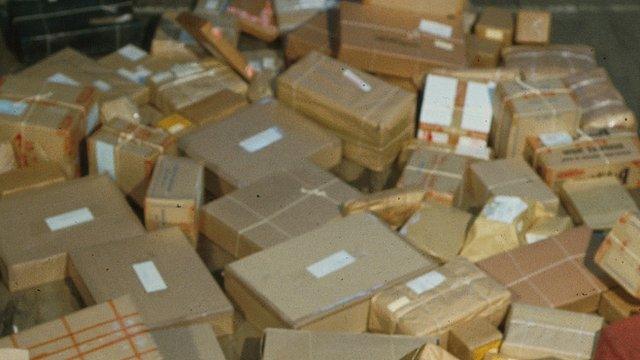Why you need to be a maths genius to post a parcel
- Published
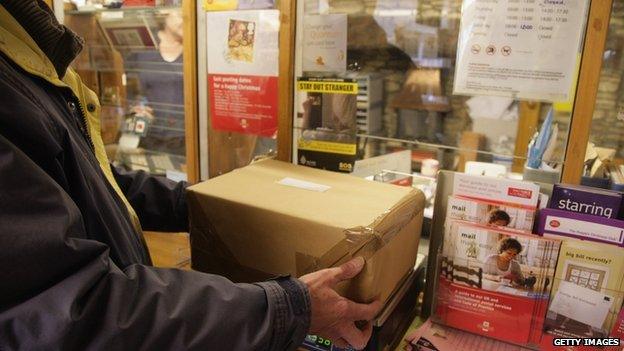
In the world of parcel post - as in other areas of human activity - size is critical.
But just when consumers may have got used to the new size criteria introduced by Royal Mail in April 2013, shapes and prices are about to change.
Two old types of "small" are out, and a "new small" will be introduced from 20 October.
Prices for the old "larger small" will be temporarily reduced - until 18 January 2015.
And the complexities get worse.
If you chose to use a rival operator, the size and weight criteria are all different.
Not to mention volumes - some operators measure in litres and some in cubic centimetres.
Do you also know the technical difference between a letter, a packet and a parcel?
If you are planning to post a present this Christmas, it is advisable to be good at maths, or at least go shopping with a tape measure and a pair of weighing scales.

'New small'
Luckily Royal Mail produces a "handy" guide, external for shoppers, which you can pop in your handbag.
But you might need to make space beforehand. The handy guide runs to 16 pages.
The key change is that whereas "small" used to mean a maximum volume of either 35 x 45 x 8cm (i.e. 12.6 litres) or 25 x 35 x 16cm (i.e. 14 litres) - the "new small" will be 35 x 45 x 16cm thus giving you a much more generous 25.2 litres.
But if the weight of your parcel goes over 2kg (4.4lb), your parcel will anyway count as medium. In which case you may want to use Royal Mail's specialist parcel service, Parcelforce, or indeed another operator altogether.
"It's incredibly confusing," says consumer expert Sue Hayward.
"I think for most people it's almost the luck of the draw when they turn up at the local post office to see how much they'll be charged," she says.

Comparing rival operators might need major calculations
Litres
Be careful how you wrap a parcel too, says Sue Hayward. She recently posted two identical compact mirrors, but made the mistake of wrapping one in a box, and one inside a padded envelope.
The one in the box cost £2.80 - the one in the envelope cost £1.20.
"Same product, but that's a huge difference - of £1.60," she says.
And using a rival service is not necessarily any simpler, or comparable.
Collect Plus - which uses a network of 5,500 drop-off points, claims to be cheaper than Royal Mail when it comes to medium-sized parcels that weigh between one and 10kg.
But its size criteria are different. Royal Mail's "medium" is 1cm longer, but its width and depth criteria are 4cm shorter than those of Collect Plus.
MyHermes - another company that uses shops for customers to drop off or pick up - claims to be cheaper than Royal Mail for parcels up to 1kg. Its prices also include tracking, allowing customers to follow a parcel's progress on the internet.
Yet its website declares its maximum volume is "225cm", presumably meaning cubic centimetres. If that were true, this volume in litres would be just 0.22 litres - a tiny fraction of Royal Mail's volume allowance.
"To work out the volumetric area, if you add the two shortest dimensions of the parcel and multiply them by two, add the length, the total calculation needs to be under 225cm," explains a myHermes spokeswoman.
And then declares that the maximum volume allowed is actually 82.68 litres.
If the operators themselves are having difficulty with the maths, what hope is there for the rest of us?
Price comparison
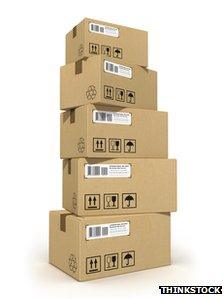
Price comparison sites could be useful when posting a parcel
Royal Mail's advice for anyone confused is to go along to a Post Office, and take a look at its "easy-to-use" templates.
Or you can pre-buy some of its boxes, and then see how much you can stuff inside.
"You can buy boxes in the Post Office which are set to the sizes we're pricing on," says Nick Landon, Royal Mail's managing director of parcels.
"You can buy these in advance," he says. And presumably take them shopping with you.
Then there is the matter of Royal Mail's temporary price reduction, on the current larger small size, as it were.
From 20 October to 18 January 2015, this will come down from £3.80 to £2.80.
Will that price reduction become permanent?
"We will take a view on that in the new year," says Nick Landon.
No wonder there are now a myriad of parcel price comparison sites on the internet, which do the maths for you.
Sue Hayward's advice is to visit them - so saving yourself a bit of money, and a lot of brain-ache.
- Published6 October 2014
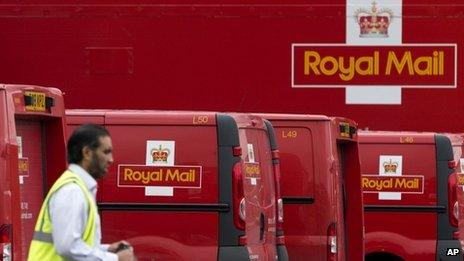
- Published8 August 2014
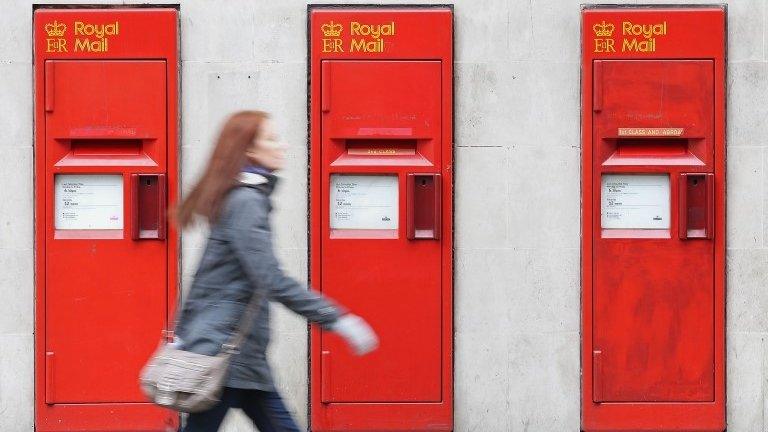
- Published27 January 2013
